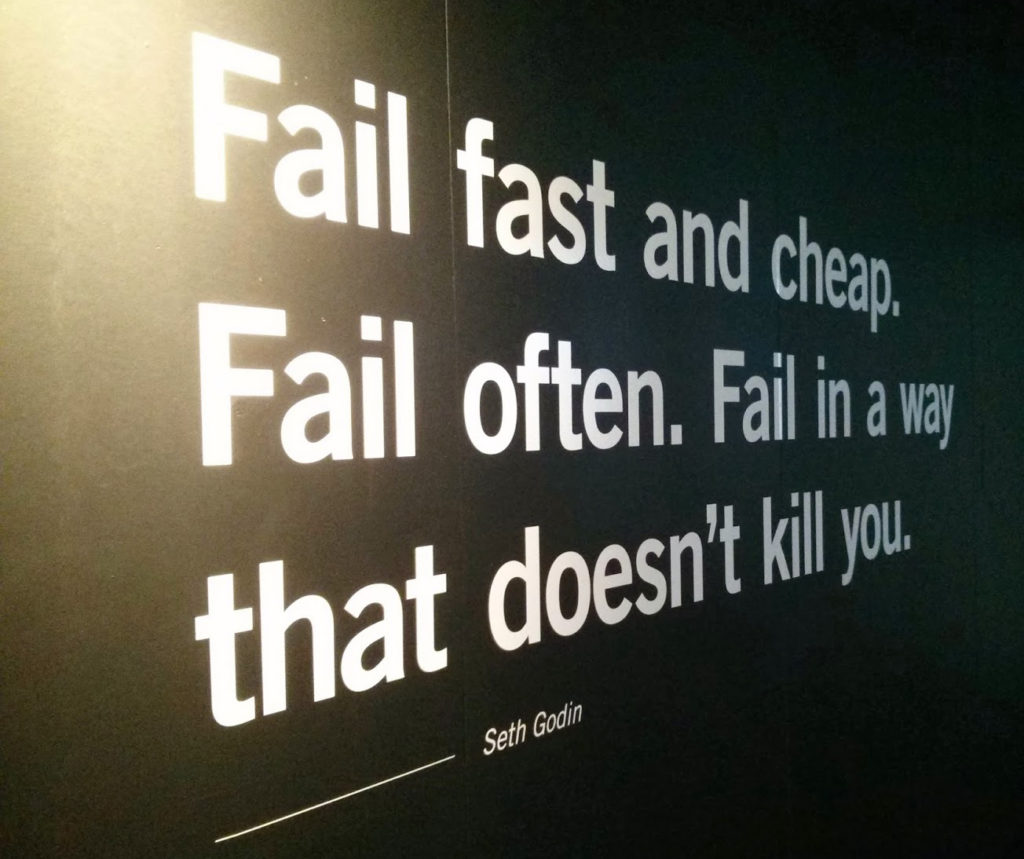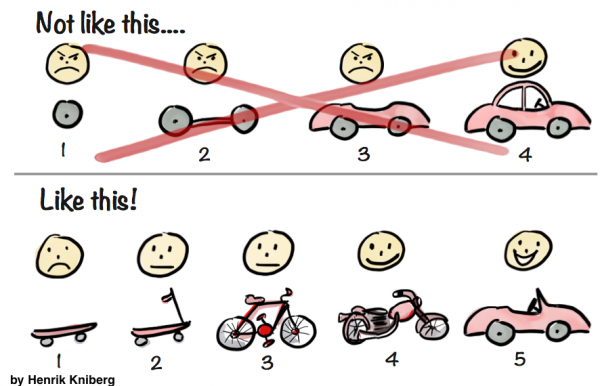This is the second post about how media companies could alter their mindset and process to develop more successful digital products and services. The first post was about why I embarked on this journey and this second piece is about how that journey started. Throughout the journey and these posts we will also collect valuable guidelines when it comes to digital product development.
Our journey towards a better process for creating successful, digital products and services begins in Japan, at the Toyota factory. The Toyota Production System (TPS) is renown for many things, among them the concept of Muda, or Waste.
When Toyota talk about Waste, they are referring to the activities we perform when developing a product that doesn’t add value to the end-user and thus should be eliminated. The process of creating a new car model is complex yet Toyota manages to apply Waste-minimizing because they have a crystal-clear understanding of the end-users; their problems and desires. So our first lesson from Japan and guideline number one is this:
#1 – Know your end-users
All product development should start with asking the question: Why should we do this and for whom? Contrary to print, online competition is fierce. Not only are we fighting for customers’ time, engagement and money with other news companies and the three big tech elephants: Google, Apple, Facebook, but we’re also seeing thousands of start-ups popping up each week. While we try to do many things simultaneously, like both digital and print, they have focused all their efforts on solving just one customer problem and doing that really, really well. And contrary to print, the digital competition is global.
”Solving one problem? But that’s impossible! We have such varied consumer base. We have to reach our core audience, the ones we’re loosing AND new customers.”
I’m afraid that’s print logic talking. Applying a digital strategy instead, we say that we need to solve each customer’s problem and each customer group we exclude is a conscious prioritization. If that means we create a printed newspaper for one customer group, a brand new app for another, and a newsletter for a third group, tough luck. Rather than making a Swiss army knife we should make a Rambo knife OR a pair of awesome scissors, but never both and definitely not all ten.
Now this is hard for news companies whose digital core product is a news site. A news site is a lot like a supermarket: A wide selection of different items but no strong niche. It’s not a sports store, nor a fashion store, or a local grocery. Rather it’s a sample of sports articles, some fashion, some entertainment, local news, editorials, weather, classifieds, and so on. When information was scarce, this was a smart product offering and the printed newspaper delivered that promise beautifully. A summary of everything you need to know, delivered every morning to your doorstep come rain or shine. That’s bloody good UX to me. But in a digital age where there is not information scarcity but rather information overload, this logic fights a losing battle. When there are sites devoted to only classifieds, or weather, or sports, or even football, or even local football, or even the local football team, or even the local football team age group 16. Then a little of everything doesn’t attract everyone anymore. Yet we keep trying to launch new supermarkets again and again and again.
And there’s a second problem which I also touched upon in post number one: Unlike Google, media companies do not celebrate their failures. It’s in our media DNA to be fast so instead of crying over spilled milk and discuss why the last supermarket endeavor failed, let’s just try another. This is a suicidal strategy in digital because the probability of failure is overwhelming. And that’s the second guideline of digital product development:
#2 – Your product is a hypothesis
Eric Ries released a book in 2011 called The Lean Startup in which he introduced the concept of Validated Learning, meaning that you should treat the assumptions you make when creating a new product as a bunch of hypotheses instead of facts. With this approach we need to find data for all hypotheses in order to test them. And the sooner we can validate an assumption, the less the risk that we’re building the wrong product or feature, hence the mantra common within Startup culture:
Ries also coined the term Minimum Viable Product or MVP which unfortunately has been misused and abused since then. Agile guru Henrik Kniberg did this brilliant illustration of what an MVP is and what it is not:
So let’s stop saying MVP and instead start using MEL: Minimum Effort to Learn.
But how do we know what to build in order to validate our hypothesis? Well we don’t, but luckily there are many methods we can apply to setup measurable MEL experiments and make our product development process an iterative, learning process instead of a hopeless sprint against the clock to release something half-assed that we don’t know if anybody truly wants. Methods like the Kano model, Lean UX, Impact Mapping, Product Discovery and Design thinking. I’ve spent the last 5+ years distilling all these concepts and many more into a new digital development process that has actually been tested on 20+ projects in a large media company. How’s that for a cliffhanger? But before we dive into that process we need to spend a little more time in Japan and look at what waste is in a modern media organization in contrast to a Japanese automobile company. Or a small tech startup for that matter.
Written by: Anders Härén – CTO at MittMedia



